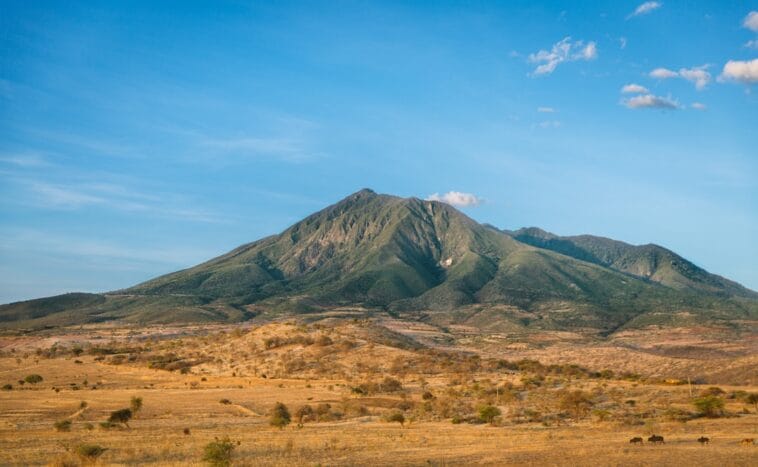Cameroon is a country in Central Africa known for its diverse landscapes, cultures, and wildlife. It shares borders with Nigeria, Chad, the Central African Republic, Equatorial Guinea, Gabon, and the Republic of the Congo. The nation’s geographical and cultural variety has earned it the nickname “Africa in miniature.”
With over 250 ethnic groups and more than 200 languages spoken, Cameroon is a linguistically and culturally diverse country.
English and French serve as the official languages, a result of its colonial history under German, British, and French rule. This linguistic diversity contributes to Cameroon’s cultural richness and appeal to visitors interested in experiencing various traditions and ways of life. Cameroon’s landscape includes coastal regions, mountains, rainforests, and savannas, providing habitats for a wide range of plant and animal species.
The country’s natural attractions include Mount Cameroon, the highest peak in West Africa, and Waza National Park, known for its diverse wildlife. Major cities like Douala, the economic capital, and Yaoundé, the political capital, offer modern amenities and cultural experiences. In contrast, rural areas and traditional villages provide insights into the country’s indigenous cultures and customs.
This combination of urban and rural environments contributes to Cameroon’s appeal as a travel destination for those seeking varied experiences within a single country.
Key Takeaways
- Cameroon is a hidden gem in Africa with diverse landscapes, rich cultural heritage, and vibrant cities.
- From lush rainforests to savannas and mountains, Cameroon offers a wide range of landscapes to explore.
- The country is home to a wealth of cultural and historical treasures, including ancient kingdoms and traditional festivals.
- Embark on a safari adventure in Cameroon’s national parks to spot a variety of wildlife, including elephants, lions, and gorillas.
- Relax at the beautiful beaches and bays of Cameroon, where you can enjoy water sports and stunning sunsets.
Discovering the Diverse Landscapes of Cameroon
Mountainous Landscapes
The Cameroon Highlands, located in the western part of the country, are home to some of the most breathtaking scenery, including the picturesque Mount Cameroon, the highest peak in West Africa. The region is also known for its fertile volcanic soil, which supports an abundance of agricultural activities, including coffee and tea plantations.
Sahel Savannas
In contrast, the northern part of Cameroon is characterized by the Sahel savanna, where vast plains stretch as far as the eye can see. This region is home to traditional nomadic tribes such as the Fulani, known for their colorful attire and rich cultural heritage. The northern landscape also features stunning rock formations and ancient cave paintings, offering a glimpse into the region’s prehistoric past.
Biodiverse Rainforests
Additionally, Cameroon is home to some of Africa’s most biodiverse rainforests, including the Dja Faunal Reserve, a UNESCO World Heritage site that is home to a wide variety of wildlife, including forest elephants, chimpanzees, and rare bird species.
Exploring the Cultural and Historical Treasures of Cameroon

Cameroon’s rich cultural and historical heritage is evident in its numerous museums, traditional festivals, and historical sites. The country’s capital city, Yaoundé, is home to the National Museum, which showcases a diverse collection of artifacts representing Cameroon’s cultural and artistic traditions. Visitors can explore traditional masks, sculptures, and musical instruments, gaining insight into the country’s rich cultural tapestry.
In addition to its museums, Cameroon is also known for its vibrant traditional festivals, such as the Ngondo Festival in Douala and the Nguon Festival in Bamenda. These colorful celebrations feature traditional dances, music, and rituals that have been passed down through generations, offering visitors a unique opportunity to immerse themselves in Cameroon’s living cultural heritage. Furthermore, history enthusiasts will appreciate the numerous historical sites scattered throughout the country, including ancient palaces, colonial-era buildings, and archaeological sites.
The Foumban Royal Palace, for example, is a testament to Cameroon’s rich history as a kingdom dating back centuries. The palace complex features intricately carved wooden structures and serves as a living museum of Bamoun culture and traditions.
Embarking on a Safari Adventure in Cameroon’s National Parks
| National Park | Number of Species | Popular Activities |
|---|---|---|
| Waza National Park | Over 379 species | Game drives, bird watching |
| Bouba Ndjida National Park | Over 300 species | Wildlife viewing, photography |
| Korup National Park | Over 400 species | Canopy walk, hiking |
Cameroon’s national parks and wildlife reserves offer unparalleled opportunities for safari adventures and wildlife encounters. The Waza National Park, located in the northern part of the country, is one of Cameroon’s most renowned wildlife reserves. Home to a diverse array of species, including elephants, giraffes, lions, and antelopes, Waza National Park provides visitors with a chance to witness Africa’s iconic wildlife in their natural habitat.
For those interested in primate encounters, the Korup National Park in southwestern Cameroon is a must-visit destination. This pristine rainforest is home to a variety of primate species, including chimpanzees and gorillas. Guided trekking tours offer visitors the opportunity to observe these magnificent creatures up close while learning about their behavior and conservation efforts.
In addition to terrestrial wildlife, Cameroon’s coastal waters are teeming with marine life, making it an ideal destination for whale watching and dolphin spotting. The waters off the coast of Limbe are particularly renowned for their abundance of marine mammals, providing visitors with a unique opportunity to witness these majestic creatures in their natural habitat.
Relaxing at the Beautiful Beaches and Bays of Cameroon
Cameroon’s coastline along the Gulf of Guinea is dotted with beautiful beaches and bays that offer visitors a tranquil escape from the hustle and bustle of city life. The coastal town of Kribi is famous for its pristine beaches and crystal-clear waters, making it an ideal destination for sunbathing, swimming, and water sports. Visitors can also explore the nearby Lobe Waterfalls, where freshwater cascades directly into the ocean, creating a stunning natural spectacle.
For those seeking a more secluded beach experience, the town of Limbe offers picturesque black sand beaches surrounded by lush tropical vegetation. The town is also home to the Limbe Wildlife Centre, a sanctuary for rescued primates and other endangered species. Visitors can combine beach relaxation with wildlife conservation by visiting this unique facility.
In addition to its beaches, Cameroon’s coastal region is known for its picturesque bays and estuaries. The Douala-Edea Wildlife Reserve, for example, is a haven for birdwatchers and nature enthusiasts, with its mangrove forests providing habitat for a wide variety of bird species. Visitors can explore the reserve by boat, observing colorful birdlife and other wildlife while taking in the serene beauty of the coastal landscape.
Experiencing the Vibrant Cities and Towns of Cameroon

Douala: The Economic Capital
The bustling port city of Douala is often considered the economic capital of Cameroon and serves as a gateway to the country’s diverse landscapes and cultural attractions. Visitors can explore Douala’s lively markets, sample local cuisine at street food stalls, and immerse themselves in the city’s vibrant nightlife.
Bamenda: A Haven of Traditional Craftsmanship
In contrast, the city of Bamenda in the Northwest Region offers a more laid-back atmosphere, with its picturesque hillside location providing stunning views of the surrounding landscape. The city is known for its traditional craft markets, where visitors can purchase handmade textiles, pottery, and wood carvings created by local artisans. Additionally, Bamenda serves as a gateway to the nearby highlands and national parks, making it an ideal base for exploring the region’s natural beauty.
Buea: A Window into Colonial History
For those interested in colonial history and architecture, the city of Buea offers a glimpse into Cameroon’s past as a German colonial territory. The city’s charming colonial buildings and cobblestone streets provide a picturesque backdrop for exploring local shops and cafes. Buea also serves as a starting point for hiking expeditions to Mount Cameroon, offering visitors an opportunity to experience both cultural heritage and outdoor adventure.
Planning Your Perfect Tour of Cameroon: Tips and Recommendations
When planning a tour of Cameroon, it’s important to consider the country’s diverse climate and terrain. The best time to visit Cameroon is during the dry season from November to February when temperatures are milder and rainfall is minimal. This period offers ideal conditions for outdoor activities such as hiking, wildlife viewing, and beach relaxation.
For those interested in cultural experiences, timing your visit to coincide with traditional festivals can provide an enriching insight into Cameroon’s living heritage. Festivals such as the Ngondo Festival in Douala or the Nguon Festival in Bamenda offer colorful celebrations featuring traditional music, dance performances, and cultural rituals. When exploring Cameroon’s national parks and wildlife reserves, it’s essential to engage the services of experienced guides who can provide insight into local flora and fauna while ensuring visitor safety.
Many parks offer guided tours and trekking expeditions led by knowledgeable rangers who are passionate about conservation efforts. In terms of accommodation options, Cameroon offers a range of choices from luxury hotels in major cities to eco-friendly lodges near national parks. Visitors can choose from beachfront resorts offering stunning ocean views or rustic safari camps nestled within pristine wilderness areas.
In conclusion, Cameroon’s status as “Africa in miniature” is well-deserved due to its diverse landscapes, rich cultural heritage, and abundant wildlife. Whether you’re seeking adventure in the mountains or relaxation on the beach, Cameroon offers something for every traveler. By planning your tour carefully and immersing yourself in the country’s vibrant culture and natural beauty, you can create unforgettable memories that will last a lifetime.
If you’re interested in exploring more of Africa’s natural beauty, you might want to check out this article on Liwonde National Park. Located in Malawi, this park offers a diverse range of wildlife and stunning landscapes for visitors to enjoy. It’s a great example of the incredible natural wonders that can be found throughout the continent.


